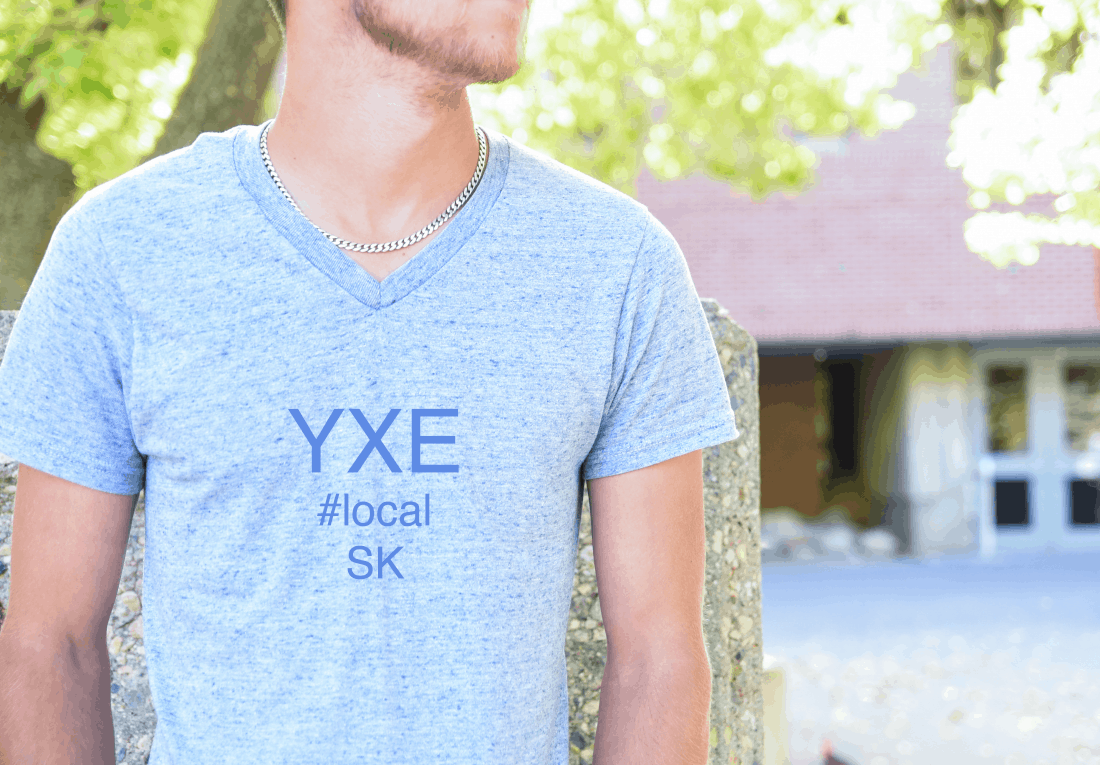You’ve seen it across every social-media platform that you can get your hands on: #local. However, this increasing trend to praise local products excessively, notable in the fashion realm, has developed into a watered-down, meaningless accolade.

Any piece of clothing with recognition and a link to our local community is met with unrivalled support and copious sales. Think Milton Glaser’s “I ♥ NY,” but with a sheaf of wheat instead of a heart and “NY” replaced with “SK” or the shirt that says “Made in SK,” which was actually adapted from the famous Los Angeles street-art piece on a furniture store called Cisco Home. What was once a seemingly novel gift is now seen as virtuous fashion in Saskatchewan.
So, what really makes this style of clothing local? The designs are surely not all locally invented, but instead, are often copied from bigger centres like Los Angeles and New York. Are the materials stitched together in Saskatoon? No, usually, they’re manufactured elsewhere, like American Apparel’s factory in the United States or Gildan’s in Montreal.
However, there is automatic validation attached to any piece of clothing with some local connection, no matter how small. The actual quality and ingenuity of the garment matters little — it would seem, it is solely the fact that a product is sold and labelled as local that makes it move off shelves like hotcakes and fidget spinners.
Does the average consumer actually respect truly local products? Prairie Harvest Café, who bought their ingredients from around the immediate area, was one example of a truly local business but had to close down due to lack of support. Saskatchewan farmland is increasingly being purchased by out-of-province entities. Where are the trendy Instagram posts about that?
Fashion is the easy, dispensable and fickle way to support local industry. It is rather easy — and clearly popular in Saskatoon — for someone to go out and buy that trendy T-shirt, hat or even pillow and claim their undying love for all things local. Maybe, we just like that job-well-done feeling that comes with sporting “local.” Our love for country is now so easy to show off. This vein of local fashion might be trendy, but it is not necessarily as responsible as it claims to be.
Supporting local is clearly not inherently bad — it can cultivate the economy and benefit the environment. However, this explosive trend in fashion has reduced thoughtfulness, and people are not making informed decisions. “Local” essentially means nothing anymore — it is quite simply a trend posing as a virtuous economic booster.
Before patting oneself on the back, think about what it actually means to be local. Have some discretion — all businesses owned in Saskatoon are technically local, but which ones are actually living up to local claim? As students, our money — and how it is spent — is important. Don’t be afraid to slow down and question the integrity of the smallest purchase, even if it is just one T-shirt.
—
Joshua Brand
Photographic Illustration by: Lesia Karalash, Graphics Editor, and J.C. Balicanta Narag, Photo Editor